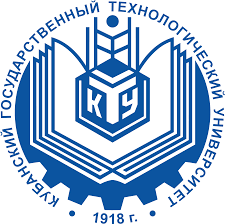
VII Съезд биофизиков России
Краснодар, Россия
17-23 апреля 2023 г.
17-23 апреля 2023 г.


|
VII Съезд биофизиков России
Краснодар, Россия
17-23 апреля 2023 г. |
 |
Программа СъездаСекции и тезисы:
Биофизика сложных многокомпонентных систем. Математическое моделирование. БиоинформатикаФилогенетический анализ и классификация коротких H2A-гистоновЛ. Сингх-Пальчевская1*, А.К. Шайтан1 1.МГУ, биологический факультет; * l.singh(at)intbio.org Ключевым фактором эпигенетических механизмов являются гистоновые белки. Они отвечают за компактизацию и функционирование хроматина посредством влияния на плотность его упаковки. Существует пять типов эукариотических гистонов: коровые H2A, H2B, H3, H4 и линкерный гистон H1 (H5 у птиц). Основную часть гистоновых белков в хроматине занимают канонические формы, которые экспрессируются в ходе репликации и отвечают за упаковку ДНК. Однако, в ходе жизнедеятельности эукариотической клетки встречаются варианты гистонов, которые встраиваются в нуклеосому и изменяют ее стабильность, чтобы регулировать работу определенных участков генома.
На протяжении длительного времени считалось, что белки гистонов медленно эволюционируют и практически не имеют различий, за исключением хвостов, которые имеют огромное количество модификаций. Однако, сегодня известно, что даже у эволюционно родственных организмов может быть широкий спектр вариантов гистонов, обладающих различными функциональными особенностями. Например, варианты macroH2A и H2A.B отвечают за регуляцию экспрессии генов, в то время как H2A.X и H2A.Z реагируют на повреждения ДНК [1]. Стоит отметить, что некоторые варианты отделились от канонических гистоновых белков значительно раньше других. Так, филогенетический анализ [2] демонстрирует, что H2A.Z отделился от других H2A до диверсификации эукариот, тогда как macroH2A появился значительно позже. Существуют варианты гистонов, которые обнаружены только в одной таксономической группе или в одном типе клеток. Например, гистоновый вариант H2A.W специфичен для растений [3], а OO H1.8 характерен для ооцитов млекопитающих. Несмотря на существование множества факторов, демонстрирующих филогенетическое, функциональное и видовое разнообразие гистоновых белков, до сих пор отсутствуют комплексное понимание и систематизированные знания о различных вариантах и их значимости. Короткие (short) H2A представляют собой класс, состоящий из нескольких вариантов гистонов семейства H2A у плацентарных млекопитающих, экспрессирующихся в основном во время развития мужских половых клеток млекопитающих до почти полной замены гистонов протаминами в ядрах сперматозоидов [4]. Для того, чтобы провести филогенетический анализ и выявить их особенности, мы собрали их аминокислотные последовательности, в том числе для недавно открытого варианта H2A.Q [4], и некоторые последовательности других вариантов из семейства H2A. На основе множественных выравниваний, которые были получены с помощью MUSCLE, мы построили филогенетическое дерево с применением алгоритмов PhyML [5], которые базируются на методах максимального правдоподобия. Опираясь на него, мы смогли сделать вывод о том, что короткие H2A возникли самыми последними в эволюционной истории на сегодня. Самым близким ортологом является гистоновый вариант H2A.R. Важно отметить, что внутри каждого подсемейства (H2A.B, H2A.P, H2A.Q, H2A.L) выделяются отдельные клады. Причем у варианта H2A.Q они одни из наиболее выраженных: можно выделить как минимум 4 клады. Также мы провели кластеризацию аминокислотных последовательностей коротких H2A с использованием алгоритма иерархической кластеризации UPGMA и проанализировали матрицу попарной идентичности. Результаты продемонстрировали, что медианное значение идентичности среди всех последовательностей short H2A составило менее 36%, при этом внутри каждого отдельного подсемейства - не менее 43%, но и не более 59%. Также, полученные кластеры хорошо вписываются в концепцию эволюционного анализа. Мы видим, что каждый кластер содержит в себе все последовательности одной или нескольких клад, наблюдаемых на филогенетическом дереве. Этот факт означает, что эволюционно образовавшиеся клады могут иметь важные функциональные отличия. Работа выполнена при поддержке гранта Президента РФ МД-1131.2022.1.4. Литература [1] Shaytan, Alexey K., David Landsman, and Anna R. Panchenko. “Nucleosome Adaptability Conferred by Sequence and Structural Variations in Histone H2A-H2B Dimers.” Current Opinion in Structural Biology 32 (June 2015): 48–57. https://doi.org/10.1016/j.sbi.2015.02.004. [2] Talbert, Paul B., and Steven Henikoff. “Histone Variants--Ancient Wrap Artists of the Epigenome.” Nature Reviews. Molecular Cell Biology 11, no. 4 (April 2010): 264–75. https://doi.org/10.1038/nrm2861. [3] Yelagandula, R., Stroud, H., Holec, S., Zhou, K., Feng, S., Zhong, X., Muthurajan, U. M., Nie, X., Kawashima, T., Groth, M. et al. (2014). The histone variant H2A.W defines heterochromatin and promotes chromatin condensation in Arabidopsis. Cell 158, 98-109. doi:10.1016/j.cell.2014.06.006. [4] Molaro, Antoine, Janet M. Young, and Harmit S. Malik. “Evolutionary Origins and Diversification of Testis-Specific Short Histone H2A Variants in Mammals.” Genome Research 28, no. 4 (April 2018): 460–73. https://doi.org/10.1101/gr.229799.117. [5] Guindon, Stéphane, Jean-François Dufayard, Vincent Lefort, Maria Anisimova, Wim Hordijk, and Olivier Gascuel. “New Algorithms and Methods to Estimate Maximum-Likelihood Phylogenies: Assessing the Performance of PhyML 3.0.” Systematic Biology 59, no. 3 (March 29, 2010): 307–21. https://doi.org/10.1093/sysbio/syq010. Phylogenetic analysis and classification of short H2A histone variantsL. Singh-Palchevskaia1*, A.K. Shaytan1 1.Lomonosov Moscow State University; * l.singh(at)intbio.org Histone proteins are a key factor in epigenetic mechanisms. They are responsible for the compaction and functioning of chromatin by influencing its packing density. There are five types of eukaryotic histones: core H2A, H2B, H3, H4, and linker histone H1 (H5 in birds). The main part of histone proteins in chromatin are canonical histones expressed during replication and are responsible for DNA packaging. However, during the eukaryotic cell cycle, there are histone variants that are integrated into the nucleosome and change its stability in order to regulate the work of certain parts of the genome.
For a long time, it was believed that histone proteins evolve slowly and have practically no differences, with the exception of tails, which have a huge number of modifications. However, today it is known that even evolutionarily related organisms can have a wide range of histone variants with different functional features. For example, macroH2A and H2A.B variants are responsible for the regulation of gene expression, while H2A.X and H2A.Z respond to DNA damage [1]. It should be noted that some variants separated from the canonical histone proteins much earlier than others. Thus, phylogenetic analysis [2] demonstrates that H2A.Z separated from other H2A before eukaryotic diversification, while macroH2A appeared much later. There are histone variants found only in one taxonomic group or one cell type. For example, the histone variant H2A.W is specific for plants [3], while OO H1.8 is special for mammalian oocytes. Despite the existence of so many proves that demonstrate the phylogenetic, functional and species diversity of histone proteins, there is still no comprehensive understanding and systematized knowledge about the various variants and their significance. Short H2A is a class consisting of several histone variants of the H2A family in placental mammals, expressed mainly during the development of male germ cells of mammals to the almost complete replacement of histones by protamines in the nuclei of spermatozoa [4]. In order to conduct a phylogenetic analysis and identify their features, we collected their amino acid sequences, including those for the recently discovered H2A.Q variant [4], and some sequences of other variants from the H2A family. Based on the multiple alignments that were obtained using MUSCLE, we built a phylogenetic tree using PhyML algorithms [5], which are based on maximum likelihood methods. Based on it, we were able to conclude that short H2A arose the most recent in evolutionary history to date. The closest ortholog is the histone variant H2A.R. It is important to note that separate clades are distinguished within each subfamily (H2A.B, H2A.P, H2A.Q, H2A.L). Moreover, the most pronounced ones are within the H2A.Q subfamily: at least 4 clades can be distinguished. We also clustered the short H2A amino acid sequences using the UPGMA hierarchical clustering algorithm and analyzed the pairwise identity matrix. The results showed that the median identity among all short H2A sequences was less than 36%, while within each individual subfamily it was not less than 43%, but not more than 59%. Also, the resulting clusters fit well into the concept of evolutionary analysis. We see that each cluster contains all the sequences of one or more clades observed on the phylogenetic tree. This fact means that evolutionarily formed clades may have important functional differences. This work was supported by a grant from the President of the Russian Federation MD-1131.2022.1.4. References [1] Shaytan, Alexey K., David Landsman, and Anna R. Panchenko. “Nucleosome Adaptability Conferred by Sequence and Structural Variations in Histone H2A-H2B Dimers.” Current Opinion in Structural Biology 32 (June 2015): 48–57. https://doi.org/10.1016/j.sbi.2015.02.004. [2] Talbert, Paul B., and Steven Henikoff. “Histone Variants--Ancient Wrap Artists of the Epigenome.” Nature Reviews. Molecular Cell Biology 11, no. 4 (April 2010): 264–75. https://doi.org/10.1038/nrm2861. [3] Yelagandula, R., Stroud, H., Holec, S., Zhou, K., Feng, S., Zhong, X., Muthurajan, U. M., Nie, X., Kawashima, T., Groth, M. et al. (2014). The histone variant H2A.W defines heterochromatin and promotes chromatin condensation in Arabidopsis. Cell 158, 98-109. doi:10.1016/j.cell.2014.06.006. [4] Molaro, Antoine, Janet M. Young, and Harmit S. Malik. “Evolutionary Origins and Diversification of Testis-Specific Short Histone H2A Variants in Mammals.” Genome Research 28, no. 4 (April 2018): 460–73. https://doi.org/10.1101/gr.229799.117. [5] Guindon, Stéphane, Jean-François Dufayard, Vincent Lefort, Maria Anisimova, Wim Hordijk, and Olivier Gascuel. “New Algorithms and Methods to Estimate Maximum-Likelihood Phylogenies: Assessing the Performance of PhyML 3.0.” Systematic Biology 59, no. 3 (March 29, 2010): 307–21. https://doi.org/10.1093/sysbio/syq010. Докладчик: Сингх-Пальчевская С.Л. 132 2023-02-13
|